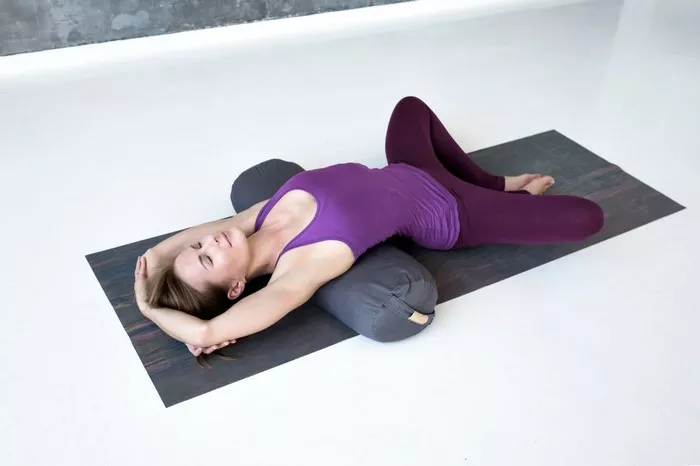Chronic pain and muscular tension have become everyday concerns in modern life. Long hours at the computer, intense physical activity, poor posture, and emotional stress all contribute to the accumulation of tightness and discomfort in the body. While stretching, strengthening, and breathing techniques help significantly, targeted self-massage can be the missing link in a well-rounded wellness practice. That’s where Yoga Tune Up® Balls come in.
Yoga Tune Up Balls (YTU Balls) are therapeutic self-massage tools designed to target areas of tension, release muscular knots, and improve mobility. In this article, I will explore how to use Yoga Tune Up Balls to relieve pain effectively, the benefits they provide, and techniques you can incorporate into your personal wellness or yoga practice. Whether you are new to bodywork or an experienced yogi looking to deepen your self-care routine, this guide will offer actionable insights to help relieve pain and enhance body awareness.
What Are Yoga Tune Up Balls?
Yoga Tune Up Balls are a form of self-myofascial release (SMR) tools, similar in purpose to foam rollers or lacrosse balls but designed specifically for safe and effective use on delicate muscle and connective tissue. They are made of a grippy, pliable rubber that mimics the feel of a therapist’s thumb and are small enough to reach places that larger tools can’t access.
There are different types of Yoga Tune Up Balls available:
- Original Yoga Tune Up Balls: Ideal for all-over body use. These come in pairs and are often used in a tote.
- Therapy Ball PLUS: Slightly larger than the originals, offering broader coverage for sensitive areas.
- ALPHA Ball: Larger and firmer, suitable for glutes, hips, shoulders, and large muscle groups.
- Coregeous Ball: An inflatable, air-filled ball that’s ideal for abdominal massage and breathing work.
Each version serves a unique purpose, but all help stimulate circulation, hydrate connective tissue, and alleviate muscular pain.
The Science Behind Self-Myofascial Release
Before diving into techniques, it’s important to understand the science behind self-myofascial release (SMR). Fascia is the body’s connective tissue webbing that surrounds muscles, bones, and organs. Due to injury, repetitive motion, inactivity, or stress, fascia can become sticky or bound down, creating trigger points (often called “knots”) and limiting mobility.
Using Yoga Tune Up Balls helps:
- Break up adhesions in the fascia.
- Increase blood and lymph flow, delivering nutrients and removing waste.
- Reduce tension in tight or overused muscles.
- Stimulate mechanoreceptors in the skin and fascia that signal the nervous system to down-regulate pain responses.
- Improve proprioception, the body’s ability to sense movement and position.
Regular use can dramatically reduce chronic pain, improve posture, and support faster recovery from physical activity.
Getting Started: Key Guidelines
1. Go Slow
Avoid fast, aggressive rolling. Move mindfully and slowly to allow the nervous system to process the input and respond with relaxation rather than defense.
2. Breathe Deeply
Your breath is your best tool for pain relief. Deep diaphragmatic breathing signals your body that it’s safe to let go of tension. This is particularly important when working on sensitive or emotional areas.
3. Use the “Pin and Stretch” Technique
Instead of just rolling over tissue, pause on a tender spot, hold, and then move a nearby joint slowly to create internal movement against the stationary pressure.
4. Stay Hydrated
Hydration supports fascial health and helps flush toxins that may be released during massage.
Techniques and Areas of Focus
1. Feet and Plantar Fascia
Why it matters: Our feet bear the weight of our entire body. Tight fascia in the feet can affect the knees, hips, and back.
How to use the YTU Balls:
- Place one YTU Ball under your bare foot while standing.
- Slowly roll from heel to toes.
- Pause on tender spots and take deep breaths.
- Use small circular motions, side-to-side movements, or toe stretches while holding pressure.
Time: 2–3 minutes per foot.
2. Calves and Shins
Why it matters: Tight calves can contribute to Achilles pain, plantar fasciitis, and restricted ankle mobility.
How to use the YTU Balls:
- Sit on the floor with one leg extended.
- Place a ball under your calf and stack the other leg on top for added pressure.
- Slowly roll up and down, stopping on knots.
- For shins, kneel and place the ball on the front side of the lower leg, just off the shin bone. Shift your weight gently.
Time: 2 minutes per area.
3. Hamstrings and Glutes
Why it matters: These muscles often hold tension from sitting or intense workouts, which can pull on the lower back.
How to use the YTU Balls:
- Sit on the floor and place a ball under one hamstring.
- Move gently back and forth or do small hip lifts to adjust pressure.
- For glutes, place the ball under your buttock while seated and gently shift weight or cross one ankle over the opposite knee.
Advanced: Use the ALPHA Ball for broader glute coverage.
Time: 2–4 minutes per side.
4. Lower Back
Why it matters: Chronic lower back pain is often due to tight hip muscles and fascia that pull the spine out of alignment.
How to use the YTU Balls:
- Lie on your back with the balls placed on either side of your lumbar spine (not directly on the bone).
- Keep knees bent and feet on the floor.
- Gently rock side to side or use your breath to relax into the pressure.
Time: 2–3 minutes.
5. Thoracic Spine and Shoulders
Why it matters: Upper back and shoulder tension can restrict breathing, posture, and arm mobility.
How to use the YTU Balls:
- Place two balls in a tote on either side of your spine at the mid-back.
- Lie back over the balls with your knees bent and feet on the floor.
- Cross arms over your chest to widen the scapula.
- Roll up and down slowly or lift your hips for deeper pressure.
- Move the balls up or down along the spine incrementally.
Time: 3–5 minutes.
6. Neck and Upper Traps
Why it matters: Tech neck and desk posture create excessive tension in the upper trapezius and suboccipital muscles.
How to use the YTU Balls:
- Lie on your back and place two balls under the base of your skull.
- Gently nod your head “yes” and shake it “no.”
- For upper traps, place a ball between your shoulder and a wall.
- Roll slowly or hold pressure, moving the opposite arm up and down.
Time: 2–3 minutes.
7. Abdominal Area (Coregeous Ball)
Why it matters: The diaphragm, psoas, and abdominal fascia are deeply tied to the nervous system, stress, and back pain.
How to use the Coregeous Ball:
- Lie face-down and place the ball under your belly, just above the pubic bone or off-center to avoid organs.
- Inhale deeply to press into the ball, exhale and soften.
- Gently rock side to side or add spinal twists.
Warning: Avoid this practice on a full stomach or during pregnancy.
Time: 3–5 minutes.
When and How Often to Use Yoga Tune Up Balls
Frequency:
- Beginner: 2–3 times per week.
- Intermediate/Advanced: Daily, as part of your movement practice or post-workout recovery.
Duration:
- 10–20 minutes is sufficient for a focused session.
- You can also break it up—5 minutes on your feet in the morning, 5 minutes on shoulders in the evening.
Best times:
- Morning: To awaken the nervous system and increase circulation.
- Post-workout: To aid in muscle recovery.
- Before bed: To calm the nervous system and release tension.
Benefits of Using Yoga Tune Up Balls
The effects of regular use go beyond simple muscle release. Users often report:
- Reduction in chronic pain
- Increased range of motion
- Improved athletic performance
- Better posture
- Deeper breath capacity
- Enhanced body awareness
- Relaxation and stress relief
It’s not uncommon for people to feel an emotional release during or after a session, as the fascial system is deeply intertwined with the nervous system and past trauma.
Precautions and Contraindications
- Avoid rolling directly over bones, joints, or inflamed areas.
- If you’re pregnant, have a hernia, or have serious medical conditions, consult your physician before starting any self-massage practice.
- Pain should never exceed a 7 out of 10. Discomfort is normal, sharp pain is not.
- Always work on a stable surface and stop if you feel dizzy, nauseous, or uncomfortable.
Final Thoughts
Yoga Tune Up Balls are more than just massage tools—they are a means of developing a deeper relationship with your body. Incorporating them into your yoga practice or daily routine can be transformative, helping you manage pain, prevent injury, and feel more embodied.
Like yoga itself, the key is consistency, awareness, and patience. Each session with the balls is a chance to tune in, listen, and respond with kindness to your body’s needs. Whether you use them for five minutes or fifty, the benefits are cumulative and lasting.
So grab your Yoga Tune Up Balls, find a quiet corner, and start exploring the intelligent and intuitive world of self-myofascial release. Your body will thank you.
Related Topics:
















